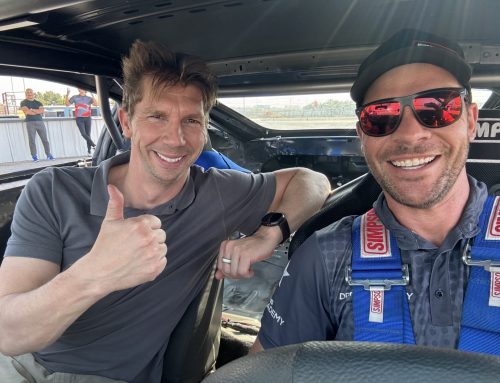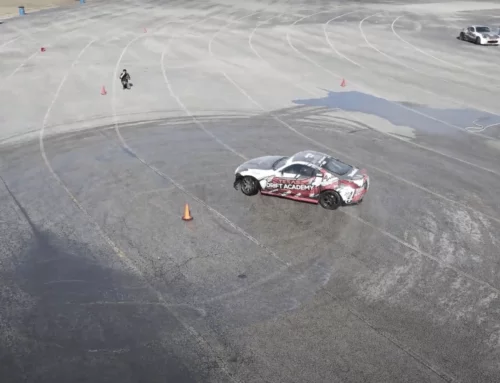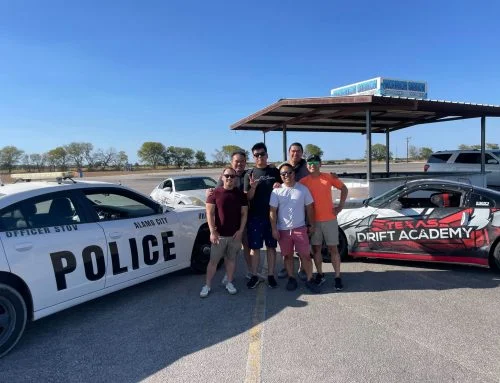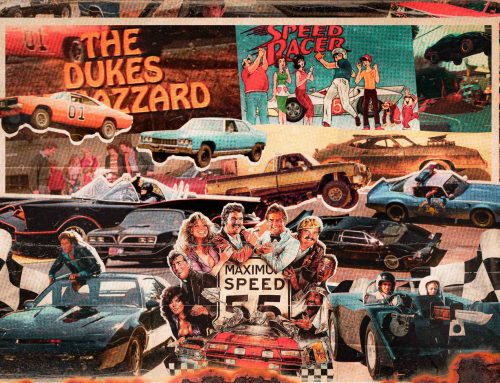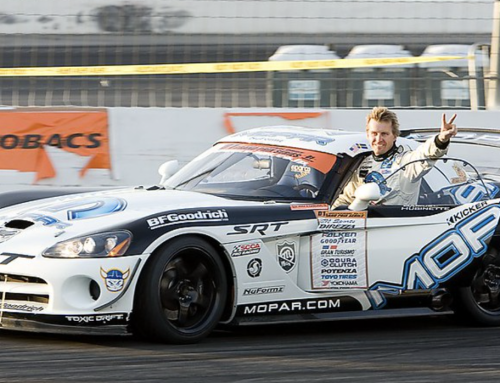There are two ways to become a better driver. Learn from your mistakes and/or learn from successes. And in both, you can also learn from others.
I met Thomas Merrill (Instagram) years ago when I attended AMG Driving Academy at COTA. He was a master at analyzing track data and coached me to better track times. He also coached me to win the drift championship at the academy. Drifting a 4,000 lb automatic around a course has unique challenges! In the end, I was impressed how he understood what it takes to become a better driver. I felt there’s a lot to learn from this winning driver. How winning?
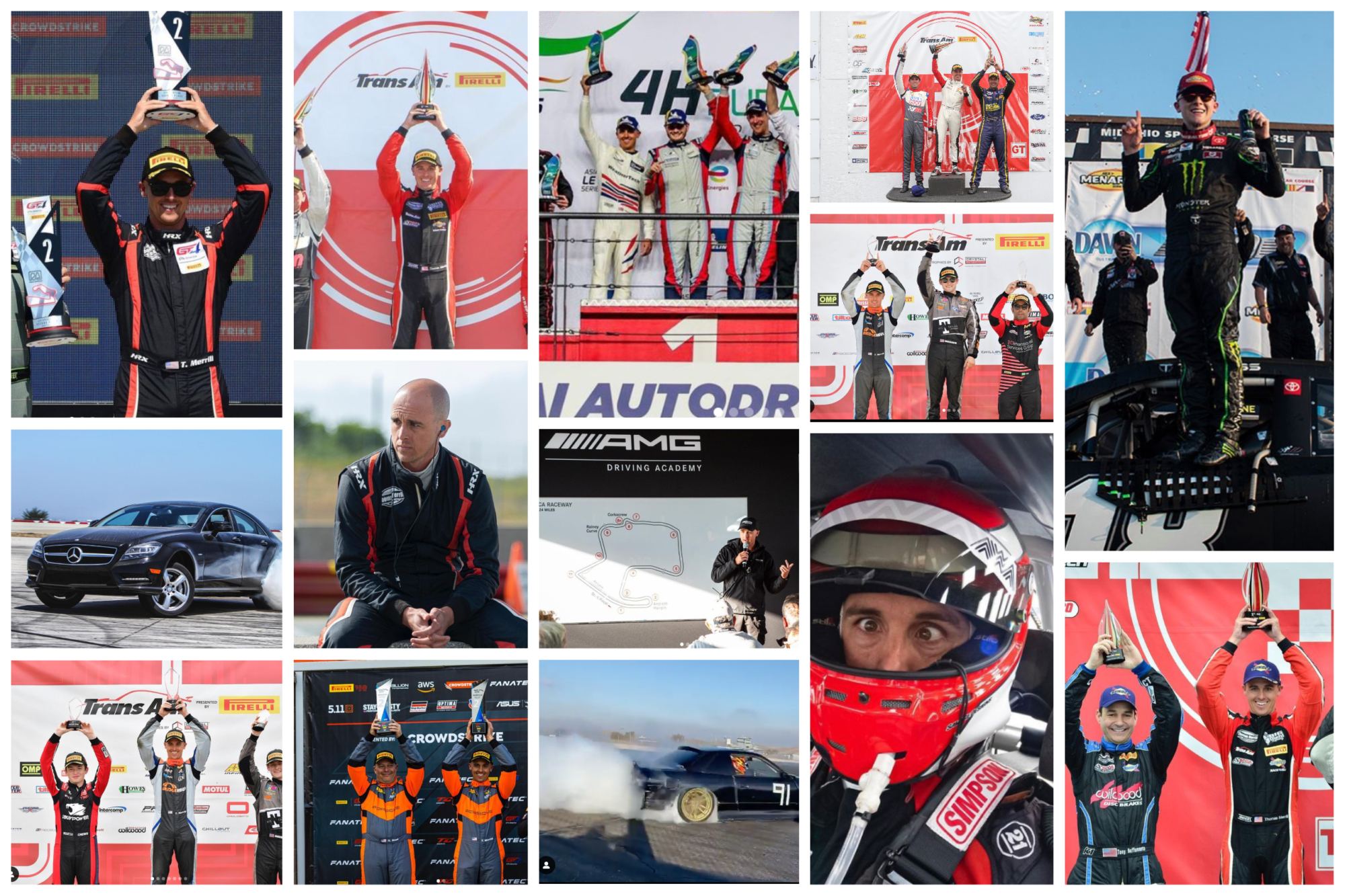
Thomas started his karting career at 11 and won six straight titles. He won regional championships at 16 and took back-to-back national titles in 2005 and 2006. He raced formula cars in SCCA and Pacific F2000, earning a championship, Rookie of the Year award, 3 track records, and over 15 wins. Thomas transitioned to Grand Am with PR1 Motorsports, racing through 2010. He won 10 races in the TA2 class with Big Diehl Racing and Mike Cope Racing, and achieved podium finishes in every race in the IMSA Prototype Challenge with K2R Motorsports. In 2020, Thomas joined the Carrus-Callas racing team, and in 2021 he won the Sahlin’s 6-Hours of the Glen with WIN Autosport in the IMSA Michelin Endurance Cup. In 2022, Thomas achieved a 2nd place finish with Weathertech Racing at the 24 Hours of Le Mans and won the Trans Am Championship in TA2 with Mike Cope Racing. He started off 2023 with a win at the Rolex 24 at Daytona with AWA Racing in LMP3.
See his skills in action as he goes from #27 to #1 at Laguna Seca. This is an epic race video.
Thomas was kind to answer a few questions to help us become better than the day before!
You drive different kinds of race cars. How did you learn to change/adapt to different cars on different tracks? What is your process for being the best you can be in a different car?
I have the great fortune of driving all sorts of different cars on track, from prototypes to GT cars, modern cars with ABS and TC to vintage cars with no driver aids of any kind. But they all have one thing in common – 4 tires. Getting the most out of the contact patch of the tire, regardless of the type, is all about challenging the tire’s grip limit to measure the performance. It’s critical for me to know the limits as soon as possible, so the first thing I do when I get in any racer is go out and slide it around a bit. This obviously helps the tires warm up, but it also calibrates my senses to the feel of the tires and the grip limit. This also helps me assess the setup and understand what driving style is required to get the most out of the package, or what setup changes we might need to make. At the heart of this process is the confidence I have in my car control. Sliding a car intentionally requires car control, and no one can do it well without practice.
Tell a story of how you made a big jump in your driving performance? What skill(s) did you learn and how did you learn it in a way that it stuck with you?
I made a huge leap forward in my driving ability, car control, and confidence behind the wheel when I joined the local racing school as an instructor. At the time, drifting was something new, and at the school it was something we would play with in our spare time or in the short breaks we would have during the day when no one was watching. My colleagues and I would often get on the autocross and skid pad to challenge each other with our drifting skills. All the cars we had at our disposal were lightweight and low horsepower, so it took a lot of energy and control to make them slide. Normally at the end of the schools we would take students for rides around the track. But instead of showing them a fast lap, we would show them how much we could drift… tandem sliding and making big get and bigger tire smoke clouds. And, we would often get into a bit of trouble with our superiors for doing so. But, over time the general appreciation for the sport of drifting grew, and before we knew it the school was selling programs specifically to teach students how to do what we were getting into trouble for doing!
The whole experience made a big difference for me, as I was simultaneously beginning my racing career in formula cars. Those cars are super light, fast, and make a lot of grip. But, as I soon found out, no matter how much grip any car has, it’s always a little faster if you can rotate (or slide) the car through the corner. This is very difficult in a car on slick tires, as the slip angle tolerance for the tires was quite small. I struggled in my early career with the confidence to challenge the grip, warm the tires up quickly, rotate the car aggressively, and stay at the limit of the tires as the grip went away over the course of the race. My experience working at the school, screwing around with the school cars after hours and challenging myself to be comfortable with more and more slip angle was a total game changer. I went from timidly driving the car as fast as I could to proactively demanding performance from the car and finding more and more ways to go fast, all while maintaining confidence and control.
What other performance driving experiences have helped you become a faster race car driver?
I’m a big believer in the value of new and different performance driving experiences. I drove a 360 Sprint Car for a day on a dirt track, which was both one of the coolest things I’ve ever done and one of the most educational. A few years back I challenged myself to learn how to ride motorcycles on track as well, and that gave me so much perspective on physics, tire technology, and how to find ways to go faster. After having been a motorsports professional for over 10 years, it was incredibly valuable to find a way to go back to the beginning and learn the craft from zero.
You coach other race car drivers. In all your coaching experience, what is the most common lesson learned that makes drivers of race cars closer to a race car driver?
It’s normal for most drivers to hit a plateau in their development. The basics of driving line, braking style, and shifting are usually easily understood. But, most drivers hit a plateau when they reach their “self preservation threshold.” That limit is different for everyone, but most drivers reach a point where they feel like they have to build “trust” in what the car will do. Normally this is where I introduce some car control training, much like the training offered at the Texas Drift Academy. Learning how to slide a car is usually where drivers learn that it’s not the car they have to trust, but rather their ability to control it.
How do you practice? When you have free time with a car and a track, how do you approach your practice in a way that accelerates your skill development?
This question made me chuckle. As a pro driver, I’ve never had free time with a car and track! Every time I get behind the wheel there is a job to do, so as lucky as I am to get to do what I do for a living, sometimes the hardest part is managing the pressure to constantly perform at the top level. As race teams we’ll go to the track for testing, but the focus is more on car development than driver development, so often my meaningful seat time is quite limited. In fact, I’ve gotten several jobs in motorsports that were predicated on my ability to get up to speed without needing a lot of time to do it. My practice is done on the warm up laps or in the little moments I can steal for myself at a racing school to slide around a bit!
Can you describe your mental approach to racing? How do you prepare yourself mentally before a race, and how do you maintain focus during a race?
My mental approach is centered around remaining as relaxed as possible. I perform best when I’m relaxed and able to have fun behind the wheel. Sometimes a quick nap before the race (or stint in an endurance race) will help. Other times if I’m feeling a bit nervous I’ll try to joke around with the crew to keep things light and loose. During the race I never have an issue staying focused. I’ve always said I could race a lawn mower and have fun doing it; I find the stimulation of wheel-to-wheel competition focuses me naturally. This sport is meant to be fun, so as long as that’s happening, the mental side takes care of itself!
What role does technology play in your training and preparation for races? Are there any particular tools or software that you rely on to improve your performance?
If I’m going somewhere new or driving a car that’s new to me, I’ll usually try and find some on-board video to study. A lot can be learned from video these days, the on-board camera systems we use are super sophisticated and are usually accompanied by vehicle data like gearing, speed, rpm, pedal and steering positions, etc. Simulators can also be helpful for learning new tracks, but I find they can also be misleading. I’m a feel driver, so I struggle to get everything I need from the sim. Sometimes I can pick up bad habits from the sim environment, so I’m acutely aware of trying to limit my sim time. Once I get the basics of the visuals from the sim I usually will stop there, and focus on building a feel for things during my first on-track session. There’s just no substitute for the feel you can get from sliding a car around for real!
You’ve come so far in your skills and resulting achievements. What else is there for you to learn and improve upon? How are you going about learning those key skills or capabilities to get you to the level you want?
My favorite part of our sport is knowing that I will never stop improving. Regardless of who you are or what you have achieved, there is always something to improve upon. I get better every time I get behind the wheel, no matter what I’m doing. I relish the chance to drive new things in new places and in new ways. The more I can learn how to adapt, the better I get at everything else.

